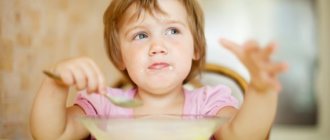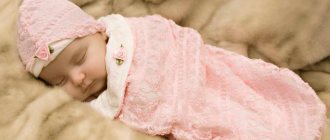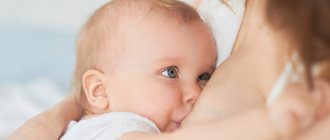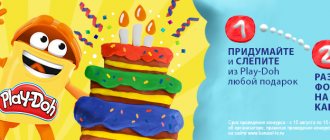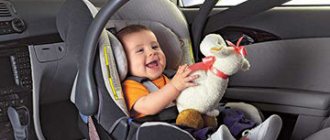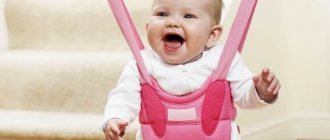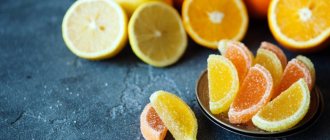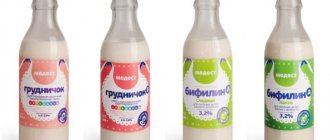How to properly care for children under 1 year old
Hygiene guards our health, protecting us from infections and diseases, including skin diseases. During the first time after birth, the mother takes care of the baby’s hygiene.
We wrote in detail about how to care for a newborn here. Continue to follow the same pattern of baby care until you teach your child to take care of himself - and don't forget about supervision!
The list of all necessary products for hygiene procedures for children of this age remains the same as for a newborn. Let us remind you what is included in it.
Basic baby hygiene items (up to 1 year):
- Diapers (disposable, reusable);
- Diapers (disposable, waterproof, flannel);
- Baby bath;
- Bathtub insert for bathing / slide into the bathtub / seat;
- Soft towels;
- Baby soap and shampoo for bathing;
- Soft mitten (or sponge) for bathing;
- Baby cream;
- Diaper rash cream;
- Baby oil;
- Cotton wool, cotton pads and balls for hygiene procedures;
- Cotton swabs with stops for cleaning the auricle;
- Wet wipes for quick care;
- Children's scissors/tweezers with rounded ends/nail file;
- Thermometer;
- Nasal aspirator;
- Syringe No. 1 with a soft spout;
- Gas outlet tube;
- Heating pad to relieve abdominal pain;
- Pipette with a round end;
- Hair brush;
- Children's washing powder;
- First aid kit:
- Hydrogen peroxide 3%;
- Brilliant green solution 1%;
- Chlorophyllipt solution;
- Iodine;
- Tincture of calendula;
- Herbs for bathing - chamomile, string, oak bark, motherwort, valerian, mint, lemon balm, lavender, pine needles.
In the second year of life, the list expands. Children's hygiene items from 1 year to 4 years (in addition to the previous ones):
- Pot;
- Toothbrush;
- Toothpaste;
- Comb;
- Face towel;
- Towel for intimate hygiene;
- A bath towel;
- Bathing sponge;
- Bath foam;
- Bathing gel;
- Sunscreen;
- Fat cream.
So, what should you do to maintain normal skin and mucous membranes and improve your baby’s overall health?
A baby's morning toilet looks the same as an adult's: he washes himself. During the day and evening, the child will remain clean and well-groomed (at first with the help of an adult caring for him), performing seemingly simple procedures that you will teach him that are no longer noticeable to the parents.
Benefits of sharing a bath
Does your child not like water, but loves spending time with you? Get into the bath with him! Joint splashing has a number of advantages:
- The baby is not afraid to be in the water;
- A close emotional contact is established between you;
- You control the baby's movements;
- You have no physical tension - you don’t have to bend over your child or hold him, your back, arms and legs are relaxed.
It's great to soak in warm water with your mother if your baby lacks her attention during the day.
Please note: only same-sex parents can bathe together with their one-year-old daughter and son.
We bathe a baby from 1 month to 1 year
Starting from 1 – 2 months, your baby confidently holds his head and, most likely, is no longer afraid of water, but welcomes water procedures with enthusiasm. If you want, use the baby bathtub while your baby is in it, but you can upgrade to an adult bathtub now if you want. Many devices have been invented for bathing a baby up to one year old in an adult bath, for example:
- Inflatable ring for the neck,
- Hats with foam inserts,
- Mattresses,
- Limiters,
- Partitions,
- Rugs,
- Seats (for children who sit confidently).
As before, the baby still needs to bathe daily at a water temperature of +32 - 34 ° C in an adult bath, where the child can move, and 36 ° C if he lies motionless in a small bath; The air temperature with the bathroom doors open should be +20 – 22 °C.
- If you decide to combine bathing your child with hardening, then gradually (1 degree per month) reduce the water temperature, bringing it to 26 - 28 °C.
- Bathing time depends on the baby's wishes in the first place and on how quickly the water cools, so if you want to prolong the pleasure for the baby, add warm water regularly.
- 10 – 40 minutes is the optimal time for swimming. In any case, it is not worth extending this process for more than an hour: if the baby takes a bath before bed, then, most likely, such a long stay in the water (especially if it has cooled down below normal) will not relax the baby and will not set him up for a sound sleep, but , on the contrary, will invigorate you too much, and you will have to make a lot of effort to calm down the rampant little one.
The use of herbal decoctions (chamomile, oak bark) is still advisable if the baby has skin problems, especially with diaper dermatitis.
Post-bath care for children from 1 month to 1 year: skin, eyes, ears, nose, nails
After bathing, the baby's skin must be thoroughly dried, paying special attention to the hair, ears, eyes, folds and folds.
- The outer side of the auricle can be wiped with a towel, and dry the inner side (not the ear canal!) with a cotton swab.
- You can do the same with your nose. If he sniffles, first use an aspirator (or a baby syringe with a soft spout No. 1) to remove anything from the nasal passage that is making breathing difficult. If there are crusts inside, drop a drop or two of breast milk into your nose, wait until they soften, and carefully remove them with a cotton swab.
- It is enough to wipe the eyes with a cotton pad moistened with boiled water (we repeat this procedure in the morning, after waking up).
It is better to use cotton swabs with limiters for cleaning the inner shell of the ears no earlier than the baby turns 1 year old.
Give your baby an air bath
If the child does not show anxiety and impatience due to the fact that he is hungry, you can give the completely dry baby 10 - 20 minutes of air baths (make sure that the room temperature is not lower than 20 - 22 ° C). This way you will give your baby’s skin a chance to breathe, take a break from diapers, restore its natural protective layer after bathing, and at the same time carry out a simple hardening procedure. Air baths are a necessary condition for the prevention of diaper dermatitis.
What to do if water gets into your mouth?
Sometimes this happens by accident during the game. Sometimes, if a child does not bathe in special devices, he can dive and take a sip of water accordingly. Sometimes kids do this on purpose.
My Danil really likes to play “pour over” with cups and sometimes he can specifically drink from this very cup. What to do in such cases?
Well, first of all, do not panic or yell at the child under any circumstances. He's just as scared as you are. If you scream, you will scare him even more, and what could be even worse - the child will be afraid of water and water procedures. Secondly, nothing terrible happened; a second dive will not lead to bad consequences.
If your child coughs or sneezes, which is the natural way to clear the airways, give him a good cough. If he’s just crying, you can take him out and hold him close to you, but he’s wet, so the child will understand that mom is always there and nothing bad happened.
If he goes back into the water, then you can continue swimming, but if he flatly refuses, then don’t force him, that means swimming is over for today.
How to properly cut nails for a baby from 1 month to 4 years old
Give your baby his favorite rattle and see if it's time for a manicure. Usually, you don’t have to cut your nails more than once a week, but it’s better to focus not on deadlines, but on the real state of affairs: the baby’s skin is still delicate, movements in the first months of life have not yet been perfected, and the risk of damage to the skin remains.
- Use special children's nail clippers (tweezers): they cut off the main part of the nail. Children's scissors with rounded ends are useful for trimming nail remnants and hangnails after cutting with clippers.
- You can complete the procedure with a nail file: it will smooth out all the unevenness (buy only the one with a soft coating and rounded edges).
- Don’t worry if you accidentally cut off a little “extra”: apply sterile cotton wool to the wound, stop the bleeding and lubricate it with brilliant green - this will be enough for minor damage.
Towards the end of the evening dress, treat the baby's skin in places where there is dryness, prickly heat or diaper dermatitis. Use baby cream, baby lotion or a special cream for this. Put on a diaper and fresh clothes. Now you can prepare your baby for bed by giving him a final meal.
We not only swim, but also swim
In addition to the transition to an adult bath, there is another significant difference between bathing a baby after a month of life and bathing a newborn - this is the development of the first swimming skills, which are acquired if the parents set out to combine business with pleasure and practice diving and other exercises in the water with their young swimmer.
Early swimming is another way to develop a child, giving a load on the musculoskeletal and respiratory systems commensurate with the child’s age and capabilities. Of course, a home bath won’t last you long, so if you are interested in this topic, contact the children’s clinic where your baby is being seen and ask if they offer classes with mom in the children’s pool.
Temperature
The room temperature should be 22-25 degrees. It should not be too hot and not too cold. What is more important is the absence of drafts. Close the windows and vents during this time.
The water temperature, as our grandmothers measured: by immersing the elbow in water: if it is normal for the elbow, then it is normal for the child. When your child is very young, you can use a thermometer.
As the child grows up, it becomes too lazy to use it, and the mother becomes more and more like an “elbow”.
The optimal temperature for bathing a one-year-old child and older is 32-33 degrees, this is exactly the temperature in children's pools. If your child is sitting in the bathtub and you are worried that the water has already cooled down, you should not add hot water if the child is comfortable in it.
Bathing in hot water does not have any benefit: it only dries the skin more, relaxes it and can have a laxative effect. Swimming, on the contrary, in cooler water strengthens and strengthens the immune system.
Just not harshly: you decided to harden the child and immersed him in an ice bath, under no circumstances! Very, very carefully, by lowering each bathing degree by degree.
Let's start the day clean! Tips for children from 1 month to 1 year
In the morning, after the final awakening, the procedure for caring for the eyes, ears, nose and skin (especially under the diaper) is repeated. Everything is like with adults: when you wake up, take care of yourself, even with the help of a loving mother!
- Wipe your face with a cotton swab dipped in water (for rashes, boiled water, as well as an infusion of chamomile or string herbs, are suitable).
- We check the nose, eyes and ears, carefully removing mucus, crusts and wax.
- We wash the baby after sleep and give the baby air baths: the skin should rest from the diaper.
- When changing diapers and underwear, we check the skin: sweaty folds can be treated with a cotton pad with baby lotion.
Unlike the newborn period, after 2 months diapers need to be changed every 2 to 5 hours (if they are not full), and after six months - as they are full.
Every few hours it is advisable to take a break from wearing a diaper, allowing the skin to breathe. Do not forget to react to skin rashes in areas under the diaper (buttocks and groin area): diaper dermatitis is easy to cure by carrying out all the necessary hygiene procedures on time and correctly (we wrote about this in detail in the article on caring for newborns).
Don't forget the importance of matching the diaper size to your baby's weight.
In addition to following hygiene rules, this factor also affects the condition of babies’ skin:
- Newborns (NB) - up to 5 kg;
- Size S (mini) – 3 – 7 kg;
- Size M (midi) – 5 – 10 kg;
- Size L (maxi) – 9 – 14 kg;
- Size XL (maxi+) - 10+ kg.
In addition to disposable ones, modern industry offers parents of babies who have already begun to move independently, reusable diapers. They are also available in several sizes or can be one universal size:
- A (3 – 6 kg);
- B (4 – 9 kg);
- C (7 – 18 kg);
- Universal (3 – 15 kg).
How to care for a baby from 1 to 4 years old
At first, parents take on all the worries about the child’s hygiene: they bathe the baby, wash him, wash him, clean his ears and nose, trim his nails.
After a year of life, a child is already an “adult”, a moderately independent person. He is quite good at handling a spoon at dinner, a toothbrush in the bathroom, and a diaper, which he is now trying to remove on his own. If you catch your child doing this activity, this is a great reason to introduce him to the potty.
There are several opinions regarding potty training: some advise doing it almost from birth, others believe that you need to wait until the child asks himself. Most experts agree that the optimal age for practicing this skill is 1.5 – 2 years, when the child is physiologically and psychologically mature for such an important event.
The same age is considered optimal for teaching a baby how to take hygienic self-care, as independent behavior skills and habits begin to develop.
How to teach children to take care of themselves
The basis of upbringing is, of course, the personal example of parents. If you teach your baby daily hygiene procedures from early childhood, this will become a family ritual. Every morning, the first thing you will do together is head to the bathroom to wash your face, brush your teeth, and comb your hair.
By the age of 2, the baby will want to do the same thing, but on his own. If a child sees neat parents in front of him, always combed, smelling good and wearing fresh clothes, he will repeat the behavior of adults and will not have to be taught hygiene.
By the age of 3 years, the baby will be able to fully take care of himself, all you have to do is watch the process with tenderness and love, providing timely support and assistance in case of difficulty.
What is included in a child’s daily hygiene ritual after one year and how can a child, under the guidance of his parents, begin to take care of his health?
- Hand washing. A child, like an adult, tirelessly explores the world, but at first he does this mostly through tactile contact. The baby touches, hugs, strokes everything - this is what most children's games are based on, including on the street. Therefore, personal hygiene begins with hand washing for the little clean person. Show by personal example how to soap your hands, how to rinse them and dry them with a towel.
- Morning wash. Morning and evening washing is the basic rule of hygiene for children and the law for the whole family. Go to the bathroom together and show your baby how best to do it: first wash your hands with soap, then your face and eyes, then dry everything thoroughly with a towel.
- We brush our teeth. Brushing teeth is one of the main stages of a child’s personal hygiene. Starting from 1 year of age, brush children's teeth with a simple gauze cloth or a special silicone brush that fits on your finger. After meals, give your baby boiled water, and teach older children to rinse their teeth after every meal. Show your child proper teeth brushing techniques. The child should have his own children's brush with a large thick handle, comfortable for his palm and small teeth. At first, you can do without paste, and after 3 years, choose a gentle baby paste without strong flavors. Evening swim or shower. Bathing a child daily is a mandatory ritual in the early years. Older children can simply take a shower or at least wash their feet in warm water.
- Nail and hair care. This will remain a concern for parents for a long time, but you can teach your child to pay attention to too long nails and dirty hair. Teach your baby to wash his hair as a normal and calm process, even though water and shampoo get into his eyes. Make it part of your evening bath and don’t give in to your little one’s protests. Teach your child to use a comb. Buy him the one he chooses himself (taking into account its suitability for his age and hair characteristics).
- Intimate hygiene of a child. The baby needs to be washed after every bowel movement and every diaper change. If your child is already familiar with the potty, teach him to use wet wipes and toilet paper correctly - from front to back. This is especially true for girls who will be mothers in the future. Their genitals are less protected and they require mandatory daily care.
- Nose care. Teaching a child to blow his nose is not an easy task, as any mother will tell you. And yet, by the age of 3–4 years, the baby should already be able to monitor the cleanliness of the nasal cavity and freedom of breathing on his own. Your personal example and exercises will help you. Show how a hedgehog puffs, the chimney of a steam locomotive (alternately for each nostril), or how you can blow out a candle with a stream of air from your nose. Do not forget to explain to your child that you need to blow your nose with your mouth slightly open, and clear your nostrils one at a time, while closing the opposite one.
It is much easier to teach a child to blow his nose when learning is turned into an exciting game. Here are common examples:
- Curious hedgehog. Introduce a hedgehog to your baby - show it in a photo or place a toy next to it. Imitate the animal puffing and then tell your child to repeat after you.
- A train with a spout. Let the baby imagine that he is a train, and his little nose is a pipe. Alternately cover your nostrils and let him hum in each of them.
- Airplanes deflating. You will need to make squares from colorful candy wrappers and paper, place them on your palm and ask your baby to blow them off with his nose. Then let him take a breath into his mouth, closing one nostril, and then blow off the airplanes. Don't forget to show all this by personal example.
Teach your child to blow his nose correctly - with his mouth slightly open, blow through each nostril in turn, while holding the other one. By the age of 3–4 years, the baby should already be able to blow his nose on his own.
It is necessary to form a stable habit in the child of using a handkerchief to blow his nose. An important rule that he must understand is that the contents of the nose must be pushed out, and not pulled in.
Hygiene and weather: from 1 year to 4 years
Hygiene is not only clean hands, but also dry feet! The weather - hot, humid, frosty, windy - affects the condition of the skin, you don’t need to prove this to anyone. Protect your baby's delicate skin from harsh weather conditions: strong wind, heavy rain, open sun, frost. When choosing care products, give preference to those that are designed taking into account the characteristics of children's skin and do not contain dyes, preservatives, or strong aromatic substances.
Protecting yourself from wind and frost
Regular moisturizers are not suitable for windy and frosty weather. Their main component is water, which evaporates from the surface of the skin, causing peeling. Therefore, in harsh weather conditions, the skin needs more reliable protection. Choose fatty creams: these products contain oils. They create an invisible protective film on the surface of the skin, preventing moisture loss and, as a result, chapping. Do not forget that the cream must be applied to the skin at least 20 - 30 minutes before going outside.
Protecting yourself from the sun
It is known that exposure to sunlight produces vitamin D, which is necessary for the proper physical development and growth of a child. In sunny weather, the main task is to enable the body to receive the dose of vitamins it needs and protect the skin from excessive exposure to ultraviolet radiation at the same time. Follow the rules of a healthy sun exposure regime and use sunscreen wisely.
What are these rules?
- It is not recommended for children under 3 years of age to be exposed to direct sunlight. Protect his skin with light clothing and cover his head with a large-brimmed Panama hat.
- Always get out of the open sun between midday and early evening: this is the period of greatest solar activity.
- When your child is sunbathing, apply a high factor sunscreen to exposed skin. Apply the product every hour and always after swimming.
- Regularly give your baby a break from direct sunlight: let him play in the shade of the awning.
- Apply sunscreen for the first time at least 20 to 30 minutes before going outside.
- After sunbathing, you need to take a shower and lubricate your skin with a special after-sun cream.
- Don't forget about water! Help your skin and body maintain the necessary fluid balance. In hot weather, always have a bottle of water with you and encourage your baby to drink little and often.
How to bathe your baby safely in the bath
- The child is under supervision. Don't leave him for a minute. The child sits confidently, strives to reach toys or the tap - especially don’t let your guard down. A baby who cannot sit must be held constantly. Remember: just a few centimeters of water is enough for a small child to choke;
- Prepare all care products in advance. Place them at arm's length from you;
- Measure the water temperature with a thermometer. The child will grow up, you will become more experienced - you will try with your elbow. The optimal temperature is 36.5 °C - 37 °C.
- There is no need to thoroughly bathe your newborn in the bathtub. Keep it in clean water or herbal decoction. A washcloth, shampoo and gel are unnecessary - a baby in the first month of life does not get dirty that much. Aggressive washing will wash away the lipid protection from the skin, it will become dry;
- There is no need to give your child a long bath. This can lead to dermatitis;
- Perform eye, ear and nose hygiene separately. Do not pour water on the baby’s face - he will get scared;
- There is no need to bathe your newborn in a stuffy bathtub. It shouldn't be hot in there. The optimal temperature is 24 °C;
- It is better to give your child a bath at the same time. 60 minutes after eating, 40 minutes before or 60 minutes before bedtime.
We protect children from mosquitoes from 0 to 4 years
Summer comes to us with beautiful weather and gives us the opportunity to spend more time outdoors. But there is a “summer” problem that worries most dads and moms - mosquitoes.
In stores you will find a lot of products and devices that offer relief from this scourge. Let's list them.
Modern means:
- Pencils and ointments. They are safe for the respiratory tract, applied only to open areas of the body, and are convenient to take with you.
- Creams and gels. Without penetrating deep into the skin, they create an invisible layer of protection against harmful insects. They usually have a pleasant smell. They can combine several beneficial properties, such as sun protection and moisturizing.
- Lotions. More suitable for use on clothing and strollers than on skin due to its liquid base.
- Soaked wipes. It is convenient to take with you on the road and wipe only open areas of the face and body with them.
- Aerosols. They contain a higher concentration of the substance, but often have a pungent odor and are dangerous for inhalation. It is better to spray the stroller during a walk or the parents’ clothes with this product.
Never ignore the manufacturers' recommendations on the packaging. Any inscriptions, including “0+”, are a reason to consult a pediatrician. Remember that the age under 3 years is extremely sensitive, and the choice of any baby care products must be treated very responsibly and thoughtfully.
How to use
If you choose a product for application to skin or clothing, it is better to first test for the tolerance of the substances included in the composition by treating a small area of the baby’s skin. In any case, always try to apply more product to the clothes and objects surrounding the child than to his skin. Do not allow the product to come into contact with abrasions and scratches, as well as mucous membranes. You should not treat the child's face and hands, because he may pull his hands into his mouth or start rubbing his eyes. Check how many times a day you can use a particular product. And be sure to thoroughly wash off applied creams, gels, aerosols and other “anti-mosquito products” after a walk, using baby soap.
Rules for bathing a newborn
When a child turns one month old, he no longer needs to be bathed in a special baby bath, but rather can be used by an ordinary adult bathtub. But you need to wash it more thoroughly!
To do this, you can use soda, laundry soap or other products that are safe for the baby. True, most parents continue to use a baby bath even at 5 months, because it is more convenient and hygienic.
At this age, you can no longer boil water and use running water for the procedure. If an adult bathtub is used for bathing, you can install a children's slide or hammock in it. This will make the process of caring for the baby more convenient for parents, because in this case they will not have to bend too low over the bathtub. And the baby, being in a hammock or slide, will not slide .
The temperature for water procedures should be reduced by one degree every week. And the duration is gradually increased to 10 minutes. The optimal water temperature for a baby aged one month is 36 degrees.
Basic things that young parents will need to bathe their baby:
- Baby bath, slide or mattress. They will prevent the child from slipping during the procedure.
- Thermometer for monitoring water temperature.
- Special product for bathing. This can be baby soap (solid or liquid), baby shower gel. It could also be a special baby shampoo. It’s true that many parents wash their baby’s head with baby soap.
- Special hypoallergenic foam for bathing. It will help make the procedure not only hygienic, but also very exciting. Parents decide on their own whether to buy such foam or not; this is not a mandatory attribute.
- To care for your baby's delicate skin while bathing, you need a soft washcloth.
Nowadays you can easily find special sponges for babies, but soft terry mittens are also suitable for this purpose. - From a baby who is 1 month old, it is necessary to wash off soap suds. A small, lightweight ladle is perfect for this purpose. After all, both parents cannot always take part in caring for a child.
- When choosing a towel, you need to ensure that it is very soft. Ideally, it is a terry towel with a hood. You can use it to carry your baby out of the bath and into the room to finish nursing.
May additionally be useful:
- Baby cream or oil. After bathing, you need to moisturize your baby's delicate skin by treating it with baby cream or oil.
- Baby powder if your baby has diaper rash.
- Cotton pads to gently wipe the baby's face.
- Special children's cotton swabs.
It is advisable to prepare all things in advance so as not to look for, for example, a towel at the most inopportune moment. And under no circumstances should you leave the baby alone, unattended.
Water procedures cannot be carried out if:
- The child suffers from a disease with elevated body temperature.
- Swimming is prohibited on the day of vaccination.
We invite you to watch a video about the opinion of the famous pediatrician Komarovsky:
